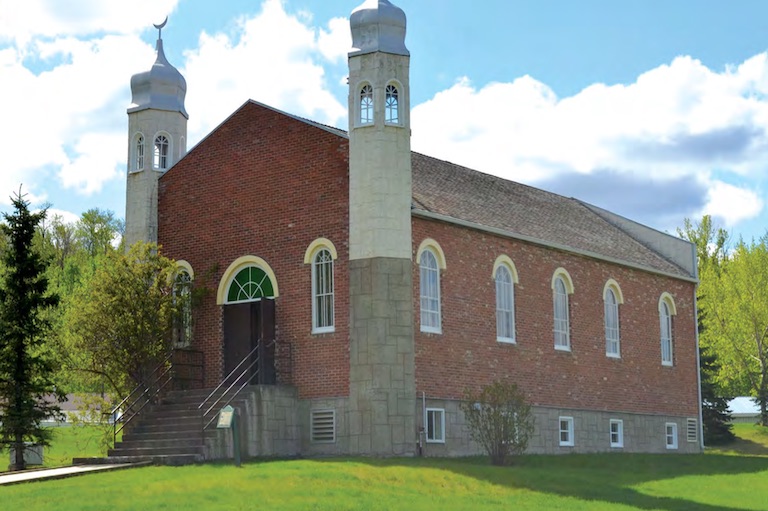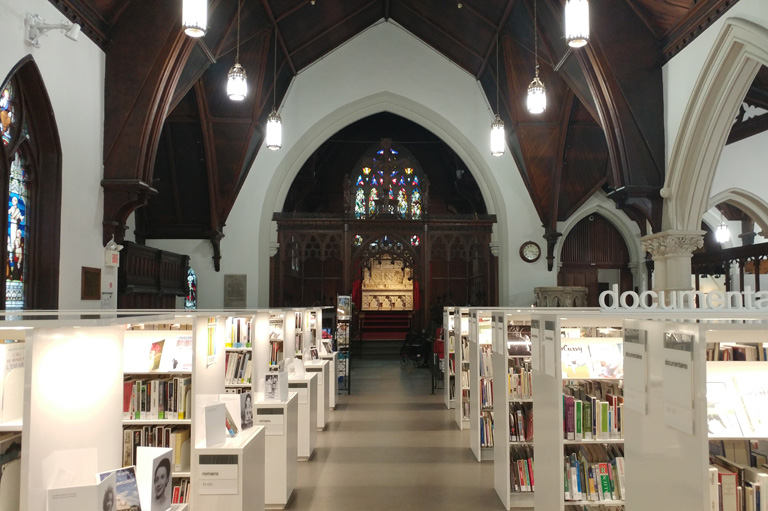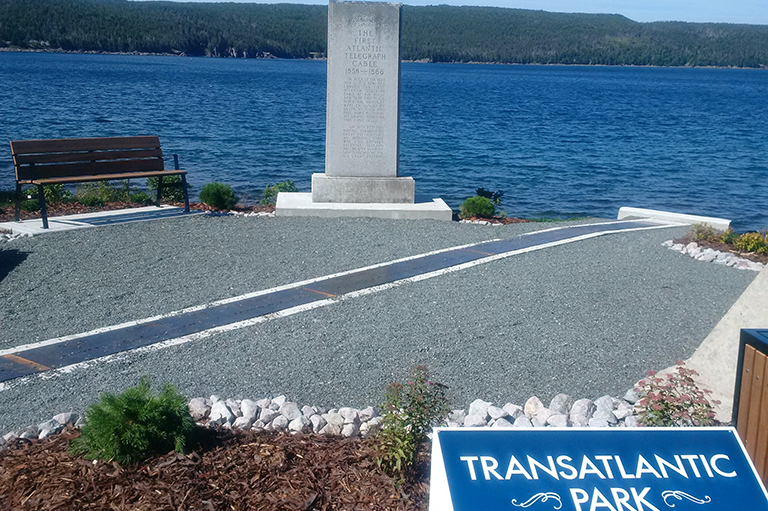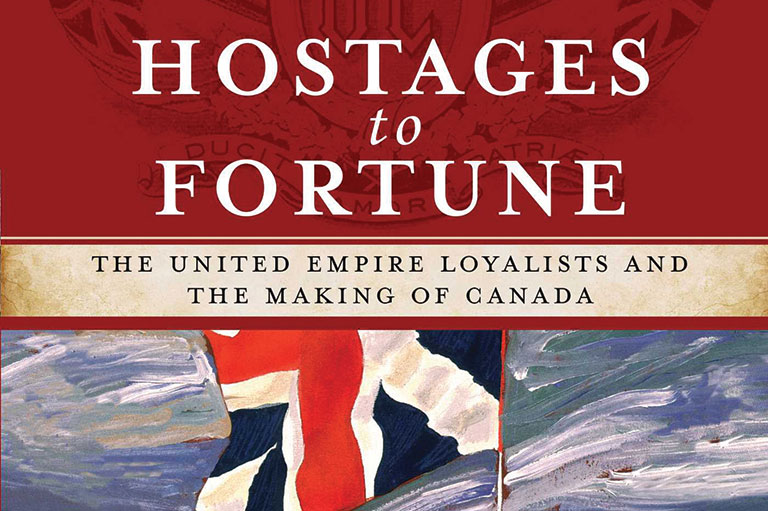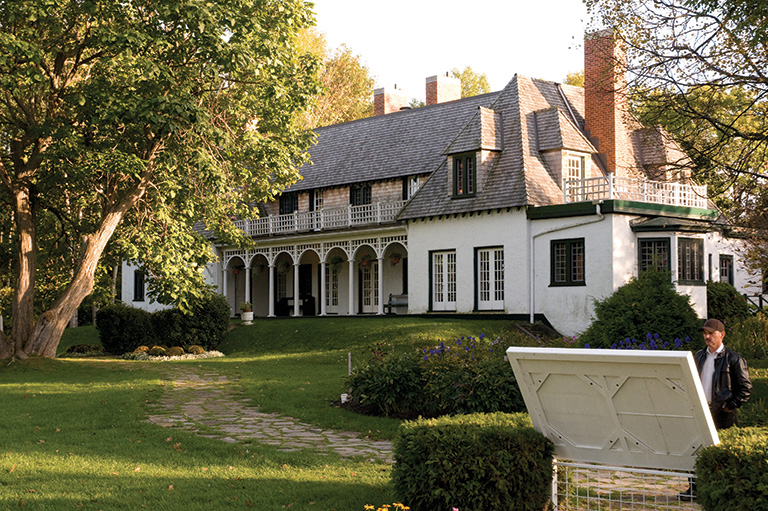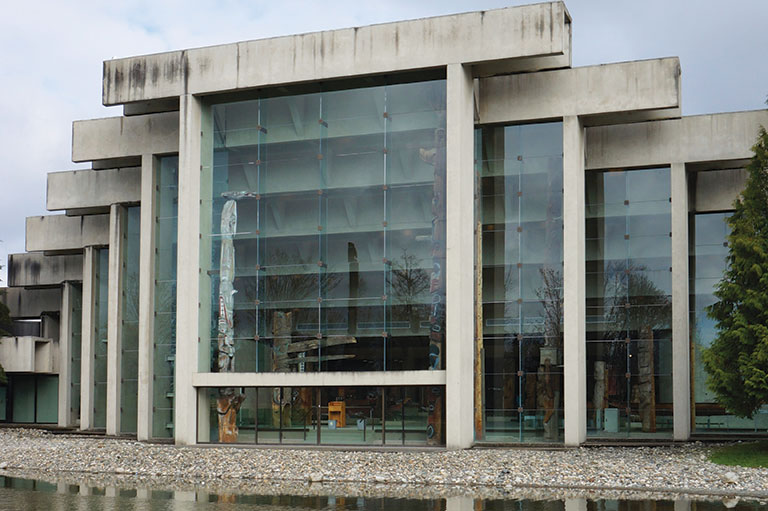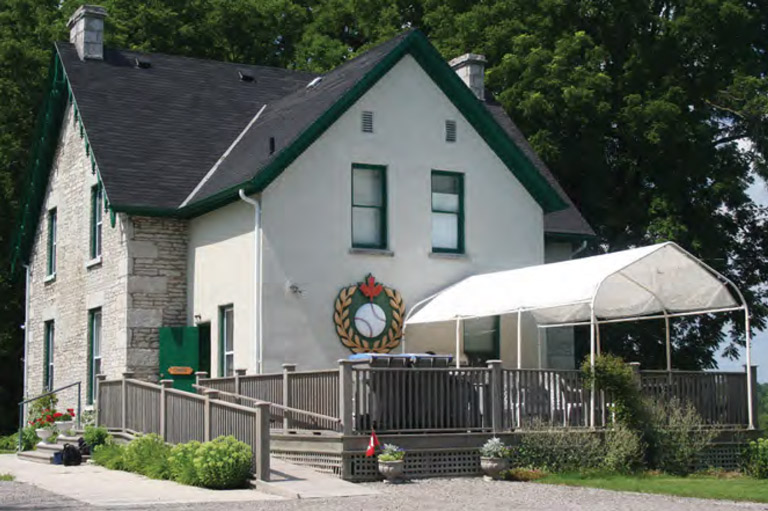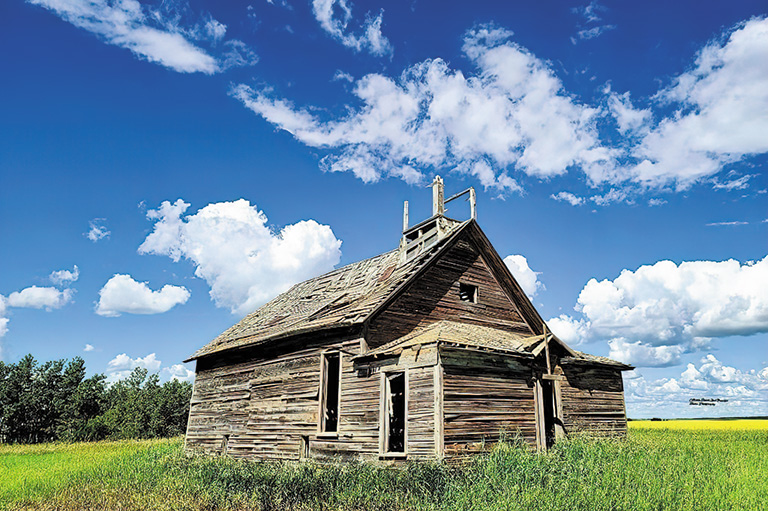Unadorned Sanctuary
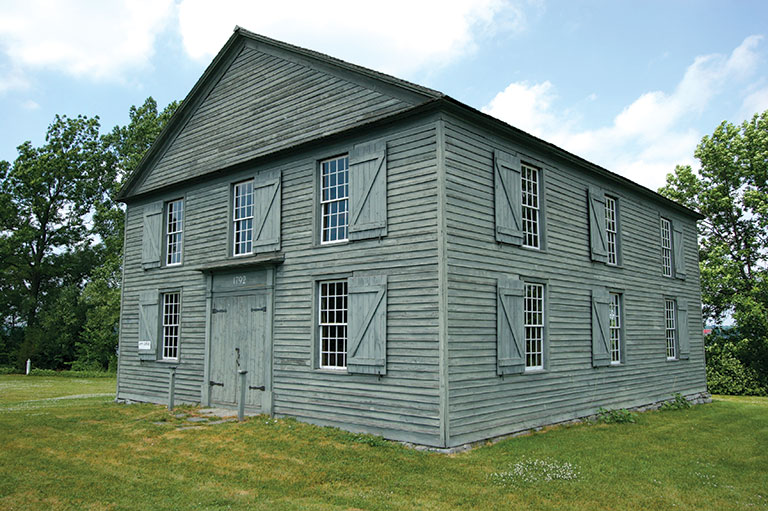
I have gazed in wonder at the gold-and-blue magnificence of Montreal’s Notre-Dame Basilica. I have sat in awe in the cool stone grandeur of Ottawa’s Christ Church Cathedral. Yet modest, severe Old Hay Bay Church predates both of these major historic houses of worship, and it has its own storied history.
So what if it was used as a barn for a while and was almost abandoned to disintegrate into the shoreline on Hay Bay, off the Bay of Quinte? Like the Loyalists who built it, the church is essential to the story of this distinctive region on the north side of Lake Ontario between Kingston and Belleville, Ontario. It’s an area whose settlers’ roots extend to the arrival in 1784 of about 250 people, under the leadership of Major Peter Van Alstine, who were fleeing post-revolutionary America.
The booming food-and-beverage scene of neighbouring Prince Edward County clinches it. My son Yannick, just weeks away from leaving home to study history at Brock University, agrees that a road trip would be an excellent use of this perfect day. As soon as we turn south off busy Highway 401, we’re in a different world. Everything is green, the bay sparkles, round hay bales dot the fields, and there are few cars on the patchy back roads.
I’ve heard about the area for years from friends who grew up there, one of whom is descended directly from Paul Huff, donor of the land for the church. A cheerful guide emerges from a cottage on the church grounds; the custodians are volunteers, each of whom takes a week in the summer to look after the place and to provide tours.
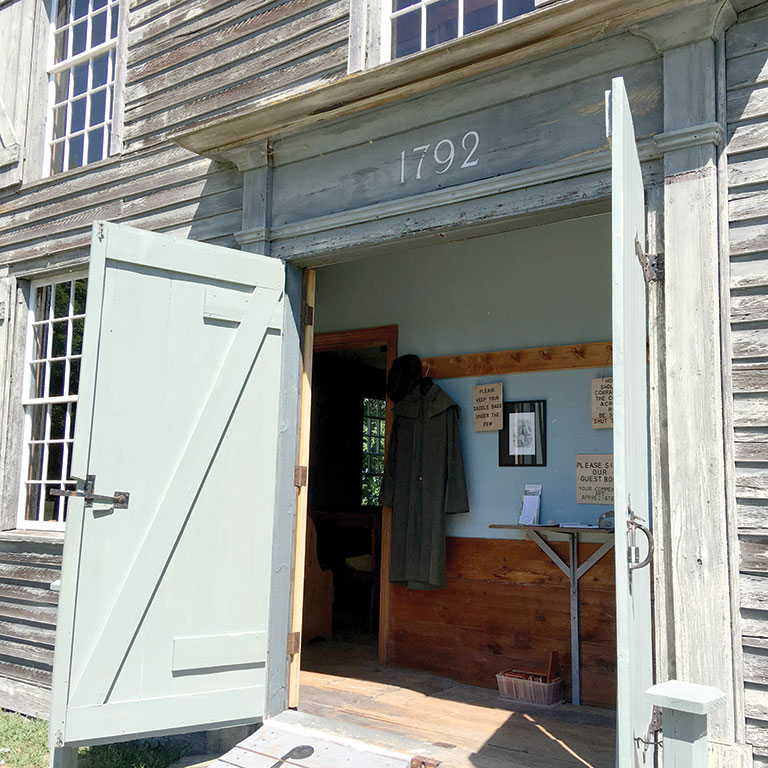
Wide wooden doors lead into an almost unornamented sanctuary. The Methodists who built the church in 1792 — it now belongs to the United Church of Canada, which was created when many Methodist, Presbyterian, and Congregationalist churches merged in 1925 — held no truck with frivolous gold leaf or fancy carving. There are sturdy wooden pews and a sturdy wooden pulpit complete with a sounding board — a piece of wood above the preacher’s head to reflect sound outward.
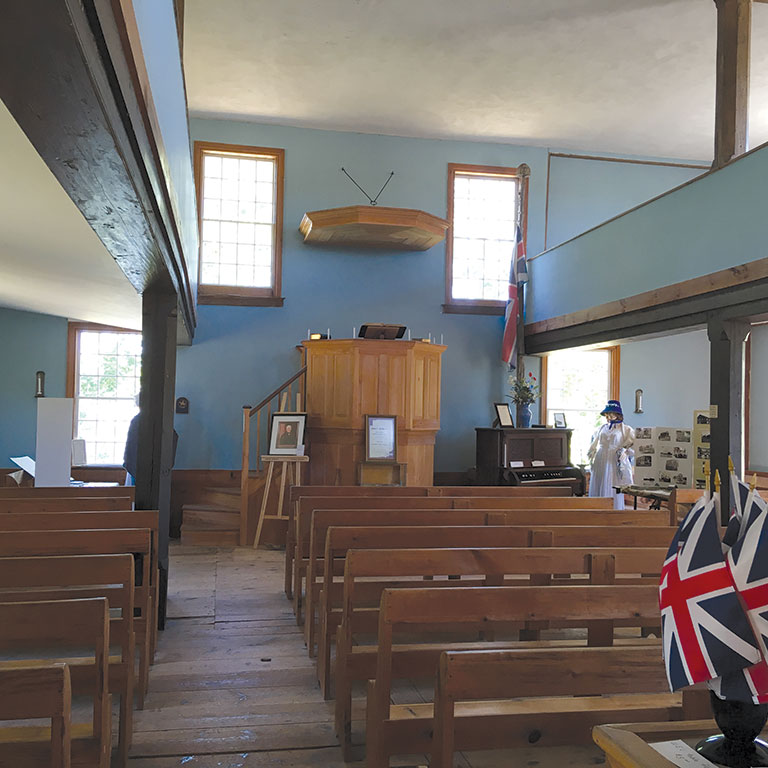
The guide hands us two L-shaped metal rods and encourages us to hold them steady as we walk across the front of the church. Yannick and I both have the same experience — when we get to a certain point, the rods seem to come to life, quivering and then swinging to form an X. The guide explains that earth underneath and around the church has been disturbed, possibly for a burial site. Whatever the rods are responding to, it’s eerily fascinating to feel them move.
The original building was expanded in 1835, but the congregation outgrew it again and sold it to a farmer who stored hay in it. The Methodists bought it back in 1912. An anchor of the earliest route served by the denomination’s hardy circuit riders, it is the oldest Methodist building — and one of the oldest churches — in Canada. Old Hay Bay Church functions mainly as a museum, but the National Historic Site hosts an annual church service — the popular August homecoming.
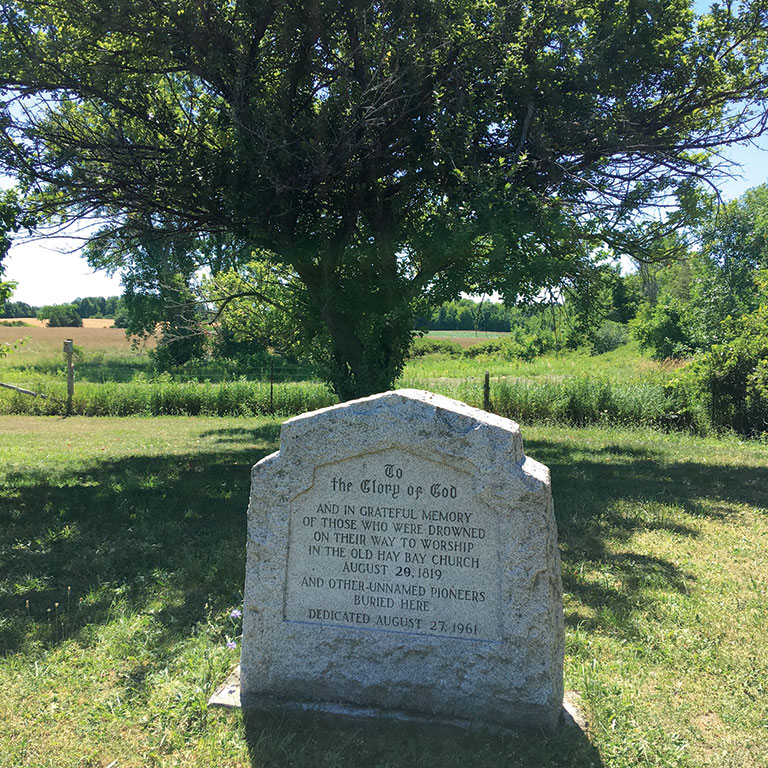
Its history is dominated by the tragic drowning of ten young people who were heading across the bay in August 1819, their Sunday finery dragging them under the water just a few metres from shore. The graveyard across the road marks the terrible incident with wooden posts and a monument amid the graves of other Loyalists and their descendants. We are startled at first to see the names of some family friends engraved on markers they do not yet need, but I can see why they chose this idyllic place for spending eternity.
We thank our guide and drive five minutes south to the spot near present-day Adolphustown, Ontario, where the Loyalists first came ashore. A plaque and a low stone wall commemorate the historic arrival. As we take in the view, I imagine weary Loyalist refugees — who had faced being beaten and tarred and feathered, as well as having their homes and businesses vandalized or worse — clambering out of their boats and sinking to their knees in gratitude for their new home.
The importance of these settlers to local history is reflected in the name of the road we follow back west through “The County,” as it is universally known: the Loyalist Parkway. We spend the afternoon happily sampling local cider, cheese, mustard, and more. The pretty villages of Bloomfield, Picton, and Wellington feel overwhelmingly busy after our pastoral morning, so we keep driving, and we note the distinctive architecture that makes the houses look like they’ve been transplanted from Massachusetts or Vermont.
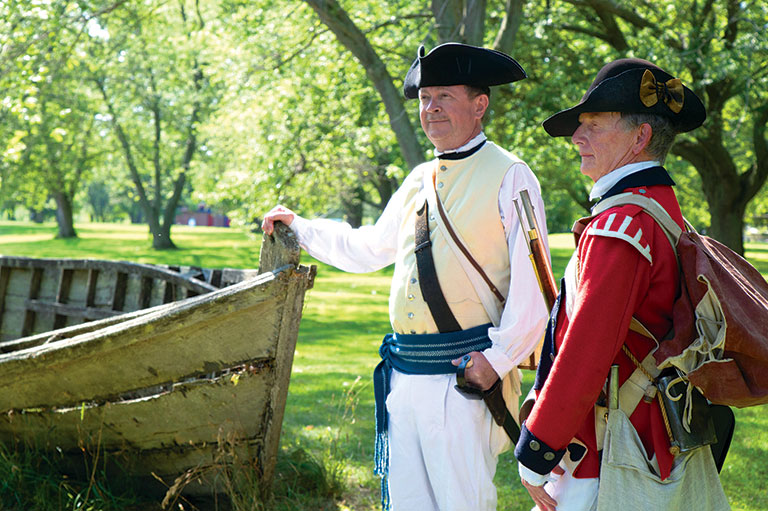
There are many Loyalist stories, from the Black Loyalists given inferior land in Nova Scotia and New Brunswick, despite having fought for Britain, to the Haudenosaunee of the Six Nations who were led by Thayendanegea (Joseph Brant) to southwestern Ontario. But, even though we’ve travelled only a few hours from home, we feel like we’ve added an important piece to our understanding of Canada, thanks to the pastoral peace of the county and the least ostentatious church we’re ever likely to see.
IF YOU GO
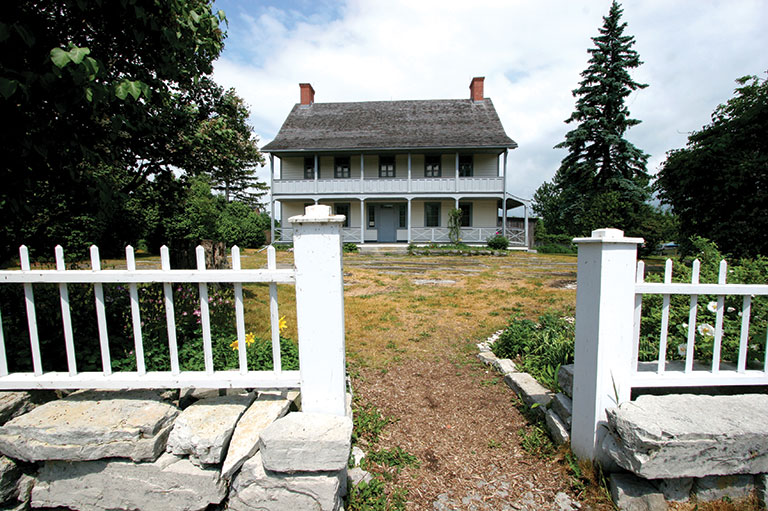
GETTING THERE: Old Hay Bay Church is about two and a half hours by car from both Toronto and Ottawa and about an hour west of Kingston, Ontario. Traffic on summer Saturdays can be heavy, especially if you want to tour Prince Edward County.
NEARBY: The brief crossing to “The County” via the Glenora Ferry lands you at Sir John A. Macdonald’s childhood stomping grounds beside mysterious Lake on the Mountain. The lake, whose source is unknown, sits sixty metres above Lake Ontario.
SAMPLE: Once in Prince Edward County, you’ll find an abundance of local food and beverages. (The hipster Toronto influence does have some benefits.) The County Cider Company, Fifth Town artisan cheese, and Cressy Mustard Co. are all worth a stop. Keep an eye out for farm stands reflecting the region’s long agricultural history, as well as bakeries, breweries, and bistros galore.
Themes associated with this article
Advertisement
You might also like...

Canada’s History Archive, featuring The Beaver, is now available for your browsing and searching pleasure!
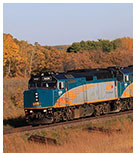
Canada’s History and its partners offer unique, history-based tours at home and abroad throughout the year.

